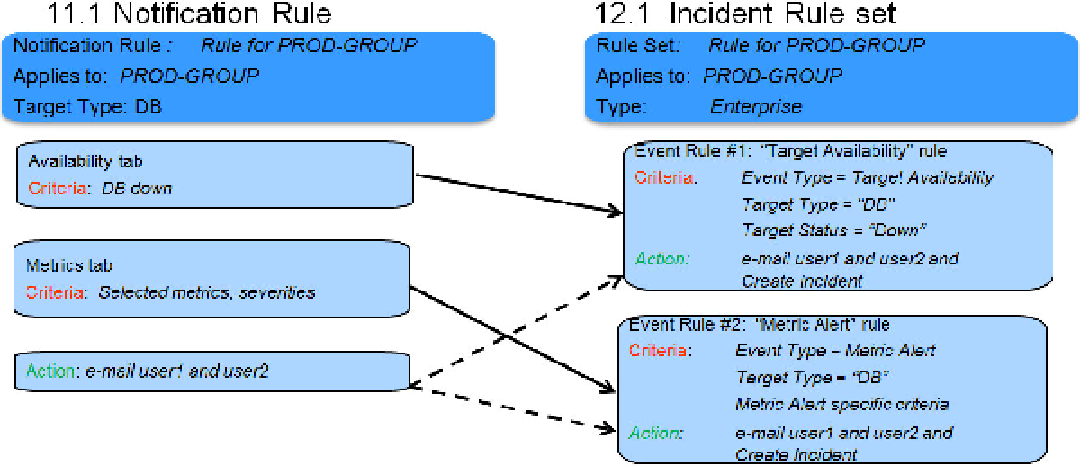Database Reference
In-Depth Information
Prioritization of Rules and Notifications
In certain scenarios, your EM12c site might be under heavy load. In these cases, more important events and incidents
are processed ahead of others. Two factors are taken into account when determining the processing priority.
The first is the lifecycle status of the target, with the priority based on the following order: Mission Critical targets
have the highest priority, followed by Production, Stage, and Test, and then Development targets have the lowest.
As an administrator, one of the responsibilities you have is to set the lifecycle status of each target appropriately.
The statuses shown here are the ones shipped out of the box with the product.
The second factor is the type of event or incident. Any events or incidents that have to do with availability, such as
target down, are always set as highest priority. Next, any events or incidents that are for critical or warning severities
are handled, and finally any events that are informational only are treated as the lowest priority.
This prioritization is taken into account only when the system is under heavy load. When the system is under
normal load, events and incidents are handled as they arrive.
Backward Compatibility
As far as backward compatibility is concerned, when you migrate from earlier releases to EM12c, backward
compatibility for notifications is provided. If you have created any notifications based on PL/SQL, operating system
scripts, or SNMP traps, these notification methods will be migrated and continue to work in EM12c.
However, Oracle does encourage you to create new versions of these notification methods by using the new event
model so you can leverage the new features we have been discussing. If you have created notification rules in earlier
releases, Oracle will migrate those to incident rule sets in the new release as part of the upgrade process.
Let's look at an example of how this mapping of notification rules to incident rule sets is done. Figure
12-29
shows
an Enterprise Manager 11.1 notification rule that applies to the group
PROD-GROUP
and the database target in that group.
Figure 12-29.
Mapping a notification rule to an incident rule set
If you're familiar with notification rules in the earlier release, you'll be aware of the tabs in the notification rule setup.
In our example, the Availability tab shows the criteria of Database Down chosen, and the Metric tab shows selected
metrics of interest and their severity. Finally, the action is set to e-mail two users, user1 and user2.

